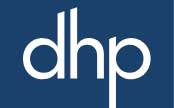The front office has for many years received significant investment to drive down costs and improve service performance to customers. Thanks to large cost bases and direct customer contact, it has been the obvious place to optimise. Software technology development has also enabled huge advancements to be made in back office operations management, although this is less well known.
Function & Value of the back Office
In reality, the back office actually touches the customer many more times than the front office, which can be clearly evidenced in end to end measurement and tracking. Touch points include multiple transactions and correspondence that make up the full end to end service delivery. It is this ‘behind the scenes’ contact and the impact both on customer service and satisfaction levels that is severely underestimated.
It’s the back office that delivers on promises made by sales and marketing. Moreover, the back office is truly responsible for delivering the customer service. Satisfaction levels which are the key to competitive advantage are therefore substantially based on back office operations.
As the value of the back office has become more widely recognised, organisations are increasingly looking for service delivery improvements. This includes better operations management to increase back office performance, whilst at the same time reducing cost. The key question being asked is how can this be unlocked?
Conversion from Multiple Systems to a Centralised System
The use of different systems creates one of the biggest operational challenges. Multiple different systems create a barrier to an accurate insight for improvement. It's extremely difficult to create structured reporting when data is held in different siloed systems - or worse, on spreadsheets. And on a more basic level, multiple systems themselves create operational inefficiency for the support teams. Attempting to join them up to provide accurate and reliable data on which to base decisions just creates further complications.
Problems created by siloed data across multiple systems have been one of the key drivers in the development of operations management software. Achieving data centralisation provides effective measurement to understand and control the back office, enabling performance and productivity to be improved. Creating a single view brings clarity to operations and enables many operational problems to be solved. Operations management software will not by itself unlock operational excellence. Nevertheless, it will significantly help you get on the right path.
Choosing Back Office Optimisation Software - Considerations
It's incredibly important to choose the right software for your operation’s wants and needs. Your chosen operations management software provider needs to be able to offer the functionality you need. Additionally, the level of customisation is critical, to ensure it fits into your organisation perfectly and is not just overlaid. You will fail to maximise the potential benefits and reduce your return on investment unless system functionally and customisation both meet your requirements. The overlay method is in reality a lazy approach - although it achieves benefits these are not sustainable in the long run.
The Operation needs the availability of complete, accurate and timely information required for collaboration, cooperation and collective decision making in one consistently defined source system.

Below are some of the key features to search for when choosing an operations management software solution:
Functionality
Operations management software should enable you to gain a single view of your workforce and workload – including total hours, available skills and resources by process and channel. Achieving that view enables you to maximise productivity and deliver the best level of service for your customer. Grouping tasks as end to end processes and by group functions will enable your customer’s journey to be tracked through your back office - identifying those touch points where improvement is required.
Resource Management
Intelligent allocation of work creates more time for your managers to focus on improving team performance. Effective monitoring will also enable you to understand in real time where your back office is in relation to performance targets. This means you can balance your back office in line with capacity, so as to deliver consistent service levels for your customer even at your busiest times. Understanding how your chosen software can schedule, allocate and measure will ensure that you can monitor work in the way you need. Metrics should be capable of being easily modified to suit your operation.
Quality Management
Quickly identifying skills deficits in your back office teams will reduce risk. Look for a risk based approach for all processes that enables specific attributes to be task scored for reporting purposes. This feature will enable team managers to identify quality issues associated with both tasks and individuals.
Monitoring and Reporting
Ignore glossy presentation of data and instead focus more on what whether it provides what you need. Your software should provide complete visibility of your operation at any time with historic, real time and future reporting. Analytics need to demonstrate how individuals, teams and processes are performing across multiple levels, sites and locations. Accessing this data easily and quickly will allow you to make prompt and effective decisions to ensure optimal performance of your entire back office operation.
Forecasting and Hierarchy
Effective optimisation software should enable your managers to take greater control of their teams. Scenario planning should enable models to be created for optimal use of resources in line with future demand. This really helps managers to determine implementation efficiency versus planned scenarios, enabling them to optimise and improve. Being able to predict future workload and impact on teams is another useful feature. Having the capability to deliver in line with wider company growth goals helps to reduce uncertainty.
Tracking Capability
It's essential that your software enables you to trace the root causes of losses in your operation. By tracking back to a specific task, process or individual will enable problem areas to be identified and rectified. One of the major benefits of modern centralised systems is the ability to view all your losses in one place across the entire operation. Gaining a clear picture of your goodwill or ex-gratia losses will enable mitigation of customer complaints and maintain satisfaction scores. Analysing this data helps decision making to reduce losses and deliver a better experience for your customer.
Complaint Root Cause Analysis
Look out for the ability to centralise all your complaints information, enabling you to quickly analyse and take decisive action to reduce complaint volumes.
Training and Competence
Maintaining training and competence is a major challenge for most organisations. Your software should ideally hold all training and regulator compliance information in one place. Creating and issuing tests to individuals, teams or the entire operation should be capable of being managed efficiently. By managing competence levels and retraining requirements, consistent quality and service delivery can be improved and then maintained.
There are many other features to look out for, but these are some of the key ones to improve performance, increase efficiency and drive down cost.

...and a word of caution - installing operations management software alone does not deliver operational excellence
Back office optimisation software is extremely effective. However, there is an inherent danger that too much attention is focussed on driving improvement through technology alone. That objective is only relevant where there is no human involved in any customer interaction with your organisation. Until that time is reached, a key focus should always be on upskilling your management team to use the tools with the new behaviours required.
Importance of Upskilling
Managers and staff make the biggest sustainable impact on service and cost drivers - managing their activities can truly unlock operational excellence. Since they are at the heart of your business and your customer interactions, it's important not to overlook them. While automation of particular tasks and processes is becoming more commonplace, complete automation is still many years away – and until that time is reached your employees are your most valuable asset.
The benefits delivered by software are undeniable but there are also real dangers as well. For those that don’t truly understand the environment it will be implemented in, over-reliance on software can create disastrous consequences. Software has the potential to take away the power and influence that your managers have on your staff. Yet it’s your managers that drive efficiency and motivate your teams for high performance, not the software.
Focus On Empowerment
Rather than undermining your managers with technology, make sure that you empower them with it. In order to do this, you should look carefully at your implementation partner. Are they just software providers or do they have a deep understanding of operations, extending to how and where software fits into the operational puzzle?
The right balance needs to be created between behaviour, skills and software. Achieving operational excellence requires a mix of both people and technology, with the ideal situation being a symbiotic relationship to drive tangible and sustainable operational changes.



